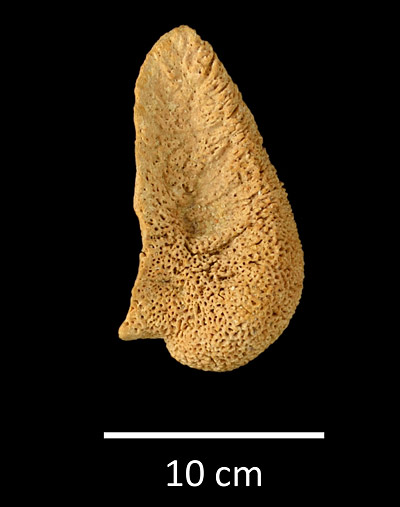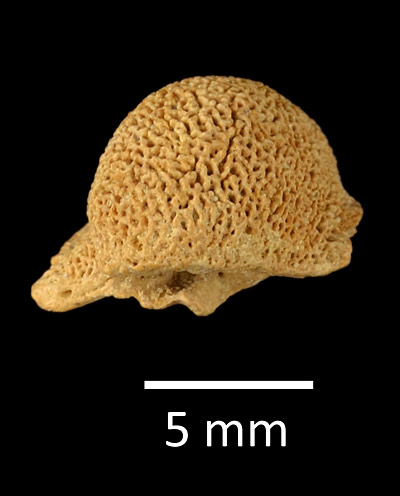Bufo defensor
Quick Facts
Common Name: Inglis toad
Bufo defensor has only been recovered from two fossil localities, both from the early Pleistocene of the Florida peninsula. But one of those, Inglis 1A, produced almost 700 fossil specimens of this species.
Bufo defensor looked similar to the modern Southern toad (Bufo terrestris or Anaxyrus terrestris), but it was larger and had a more substantial supraorbital crest.
Age Range
- Early Pleistocene Epoch; latest Blancan land mammal age
- About 2.0 to 1.6 million years ago
Scientific Name and Classification
Bufo defensor Meylan, 2005
Source of Species Name: Bufo defensor is named for a conservation group, the Florida Defenders of the Environment. The type locality of Bufo defensor was discovered during excavations for the Cross Florida Barge Canal, but the completion of the canal was later halted through efforts by the Florida Defenders of the Environment to prevent it from cutting into the Floridan Aquifer (Meylan, 2005).
Classification: Amphibia, Lissamphibia, Batrachia, Salientia, Anura, Bufonidae
Alternate Scientific Name: Anaxyrus defensor
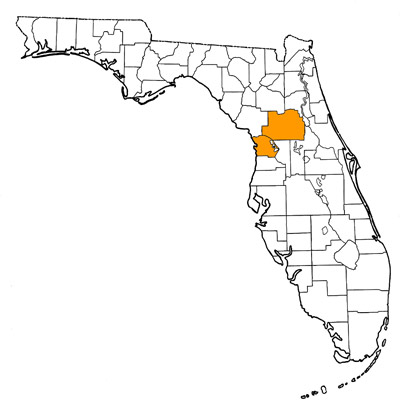
Overall Geographic Range
Bufo defensor has only been recovered from central Florida. The type locality is Inglis 1A, a sinkhole that formed within the Eocene Inglis Formation, in Citrus County, Florida.
Florida Fossil Occurrences
Florida Fossil Sites with Bufo defensor:
- Citrus County—Inglis 1A
- Marion County—Withlacochee River 1A
Discussion
Bufo defensor has only been recovered from two fossil localities, both from the early Pleistocene of the Florida peninsula. The type locality, Inglis 1A, was uncovered in 1967 during excavations for the Cross Florida Barge Canal and is interpreted to be a sinkhole within the Eocene Inglis Formation. Using biostratigraphy, the site was dated to latest Blancan based on the presence of several mammalian species that are restricted to latest Blancan faunas (Klein, 1971; Hulbert, 2010). In 1974, a crew from the Florida Museum of Natural History screen-washed sediment from the Inglis 1A site and found may fossil anurans, along with other microfauna (Meylan, 2005). This site is particularly important for understanding the evolutionary history of anurans because it fills in a 7 million year gap between the early Miocene and late Pleistocene faunas from which fossil anurans were previously known (Meylan, 2005). Six frog taxa were recovered from Inglis 1A, which Meylan (2005) stated was an “essentially modern anuran fauna”, as five species were modern and Bufo defensor was the only extinct taxon. Meylan (2005) interpreted the sinkhole to be surrounded by a xeric, or dry, habitat based upon known adaptations in most of the frog species.
Bufo defensor was first listed as Bufo n. sp. in Hulbert (2001) before being formally described by Meylan in 2005. Meylan (2005) placed his new toad species in the genus Bufo. Some subsequent molecular studies (e.g., Frost et al., 2006; Pyron and Wiens, 2011) determined that Bufo was a paraphyletic clade, and that North American species formerly placed in that genus should instead be included in the genus Anaxyrus. Other studies by modern herpetologists favor retention of the North American toads in Bufo (e.g., Pauly et al., 2009). Given this uncertainty in how to resolve this issue among the living toads, traditional taxonomy is maintained here for now. Martín et al. (2012) formally proposed that Bufo defensor be reassigned to Anaxyrus, but without any examination of the fossils themselves.
The holotype of Bufo defensor is a right frontoparietal (UF 222916), which is part of the top of the skull (Figs. 2-3). This element was chosen as the holotype because Tihen (1962) determined that this bone was the most useful for differentiating New World bufonids (Meylan, 2005). Bufo defensor is differentiated from all other members of its genus by the unusually large supraorbital crest on the frontoparietal, which becomes a large spherical protuberance posteriorly (Meylan, 2005). Meylan (2005) noted that Bufo defensor looks most similar to the modern Bufo terrestris (= Anaxyrus terrestris of Frost et al., 2006), but the larger supraorbital crest, as well as the overall larger size of Bufo defensor, differentiates the two species. The frontoparietals of the two species are similar in shape, in which the supraorbital crests increase in height posteriorly and end in a ball-like structure and the medial side of the frontoparietal is slightly concave. The ilia of Bufo defensor and Bufo terrestris are also similar in having a low ilial prominence with an anterior slope that ranges from much steeper than to subequal to the posterior slope. The ilium in Figure 4 shows a near subequal state between the anterior and posterior slopes of the ilial prominence.
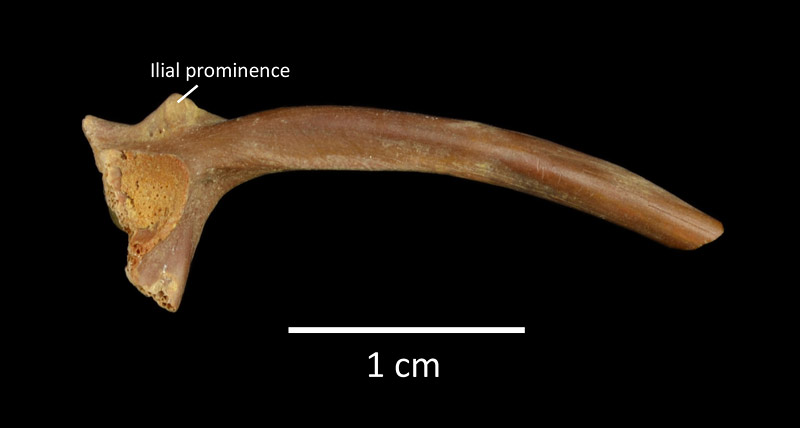
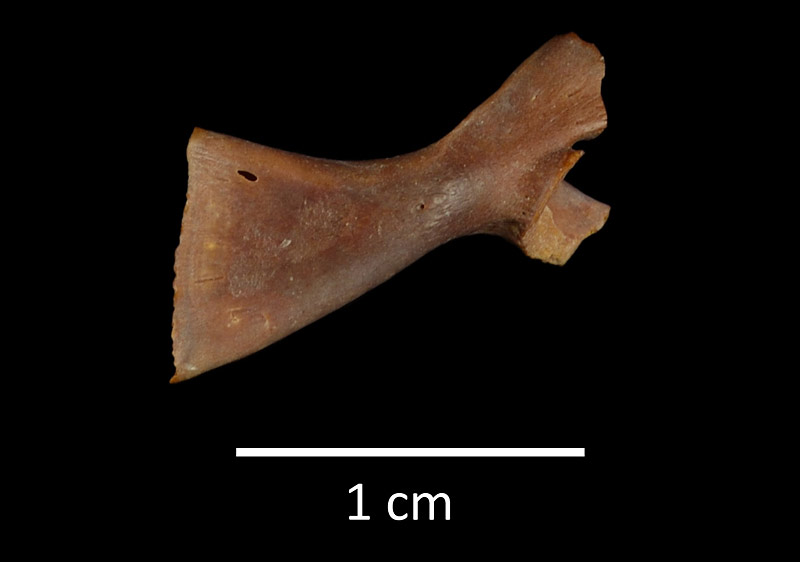
Sources
- Original Author(s): Carly L. Manz
- Original Completion Date: December 6, 2012
- Editor(s) Name(s): Richard C. Hulbert Jr. and Natali Valdes
- Last Updated On: April 3, 2015
This material is based upon work supported by the National Science Foundation under Grant Number CSBR 1203222, Jonathan Bloch, Principal Investigator. Any opinions, findings, and conclusions or recommendations expressed in this material are those of the author(s) and do not necessarily reflect the views of the National Science Foundation.
Copyright © Florida Museum of Natural History, University of Florida
